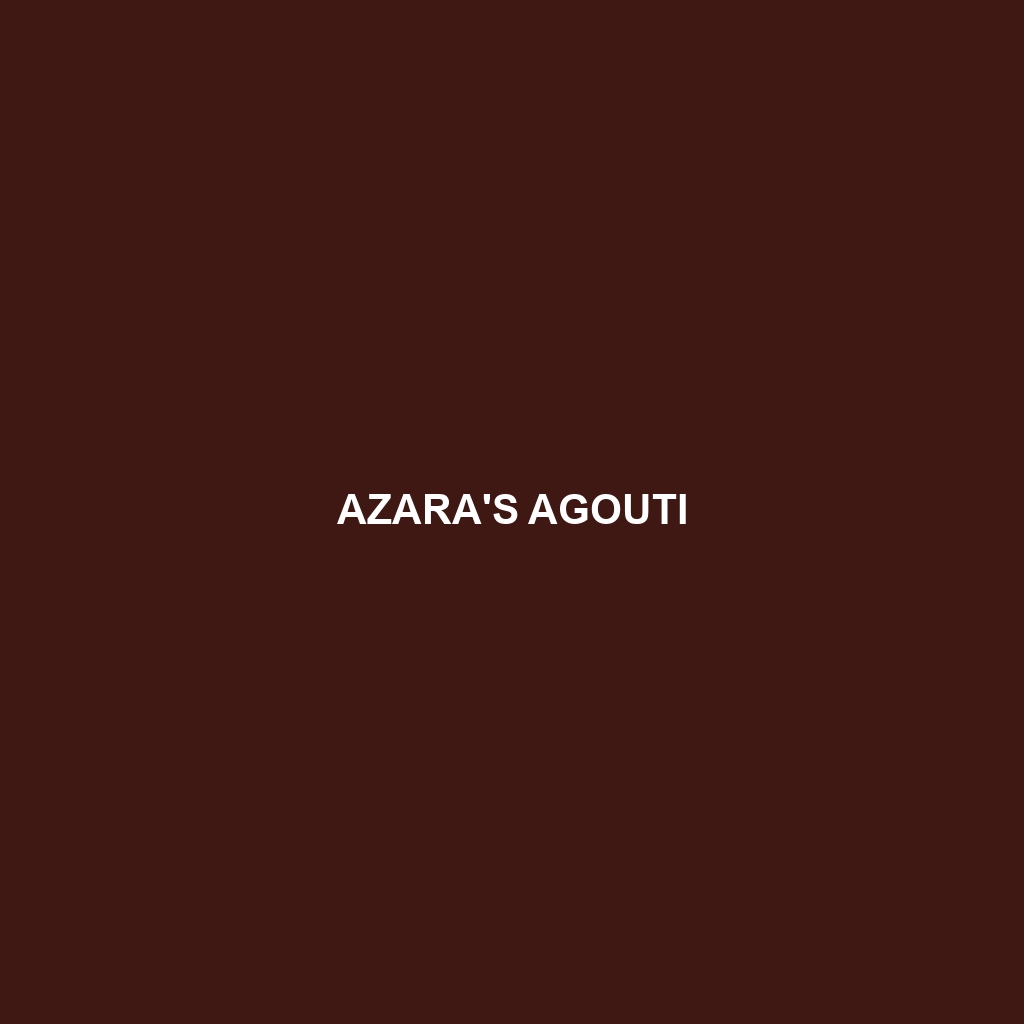Coiban Agouti: An Insight into Its Natural World
Common Name: Coiban Agouti
Scientific Name: Dasyprocta coibae
Habitat: The Coiban Agouti is primarily found in the lush rainforests of Coiba Island, located off the coast of Panama. This habitat features diverse ecosystems, including dense primary forests and secondary growth areas, which provide ample shelter and foraging opportunities for this species. Its warm, humid climate enhances the biodiversity essential for its survival.
Physical Characteristics: The Coiban Agouti is a medium-sized rodent, typically reaching sizes of 50 to 65 centimeters in length, including its tail. Its fur is generally a rich brown or reddish-brown color, which helps it blend into its forest surroundings. Distinctive features include a smaller build compared to other agoutis and robust, powerful legs adapted for quick movements through thick underbrush. Its long ears and a somewhat flattened body facilitate agility in navigating its environment.
Behavior: Coiban Agoutis are primarily diurnal, meaning they are most active during the day. These rodents are known for their social behavior, often found in small family groups. They are highly alert creatures that rely on a keen sense of hearing to detect predators. Their foraging behavior is notable; they often dig up seeds, tubers, and fruits, which they cache for later consumption, demonstrating intelligent spatial memory.
Diet: The diet of the Coiban Agouti is predominantly herbivorous. They consume a variety of fruits, nuts, seeds, and roots, making them significant seed dispersers within their rainforest habitat. Their feeding habits contribute to the ecological balance, as they help in the propagation of numerous plant species, thus reinforcing forest health and diversity.
Reproduction: Coiban Agoutis exhibit polygamous breeding behavior, with females typically giving birth to one or two offspring after a gestation period of about 98 days. The breeding season can vary, influenced by environmental conditions, but generally peaks when food availability is high. The young are born fully furred and are weaned after approximately three weeks, quickly learning to forage independently as they grow.
Conservation Status: The Coiban Agouti is currently classified as **vulnerable** due to habitat loss and hunting pressures. Conservation efforts are crucial to ensure the survival of this species, with many initiatives focused on habitat preservation and promoting awareness among local communities.
Interesting Facts: The Coiban Agouti is somewhat of a rare gem; it is endemic to Coiba Island, making it a unique subject for ecological studies. Interestingly, this species has adapted well to living in environments that other agoutis do not inhabit, showcasing its adaptability and resilience.
Role in Ecosystem: The Coiban Agouti plays a vital role in its ecosystem as a herbivore and seed disperser. By consuming various seeds and fruits, it aids in the growth of new plants, fostering biodiversity. This interaction not only supports the plant life but also benefits other species within the food web, highlighting the agouti’s importance in maintaining forest health and stability.
